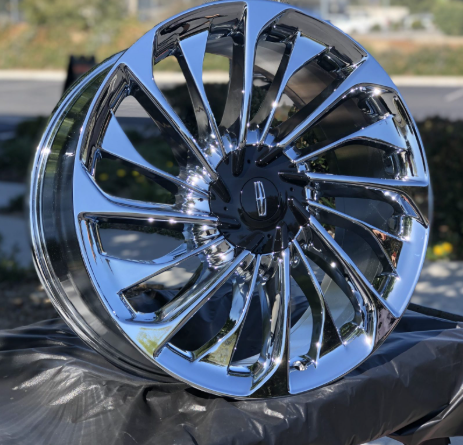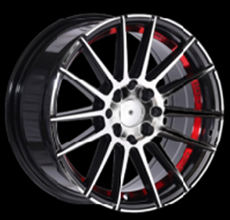A Comprehensive Guide to Wheel Rim Surface Finishing Technologies
Introduction
Wheel rims, especially 20-inch rims, play a crucial role in both vehicle performance and aesthetics. Whether you're looking for rims for sale or considering alloy rim refurbishment, understanding surface finishing technologies can help you make an informed decision. This article explores the most common wheel rim surface treatments, including coatings, polishing, and specialized finishes for materials like magnesium alloy wheels and US Mag wheels.
1. Powder Coating: Durable Protection for Alloy Wheels
Alloy wheel powder coating is one of the most popular finishing methods due to its durability and versatility. The process involves electrostatically applying a dry powder to the rim before curing it under heat, forming a resilient layer.
Key Benefits:
Corrosion resistance – Ideal for hub wheels exposed to harsh weather.
Customizable colors – Available in matte, gloss, and textured finishes.
Eco-friendly – Unlike liquid paint, powder coating emits no VOCs.
This method is commonly used in alloy rim refurbishment, restoring scratched or oxidized wheels to like-new condition.


2. Polished & Mirror Finishes: Enhancing Aesthetics
For a high-end look, many US Mag wheels and premium 5x120 rims undergo polishing. This process involves mechanically buffing the surface to a reflective shine.
Types of Polishing:
Hand polishing – Delivers a flawless mirror finish, often seen on luxury vehicles.
Machine polishing – Efficient for mass-produced wheel rim spokes.
Limitation: Polished rims require regular maintenance to prevent tarnishing.


3. PVD (Physical Vapor Deposition): Premium Metallic Coatings
PVD coating is a high-tech process used on magnesium alloy wheels and performance-oriented 20-inch rims. A thin metal film (e.g., titanium, chromium) is deposited onto the wheel in a vacuum chamber.
Why Choose PVD?
Extreme hardness – Resists scratches better than paint.
Metallic luster – Gives a chrome-like appearance without peeling.
Heat resistance – Suitable for high-performance braking systems.
4. Anodizing: Lightweight & Corrosion-Resistant
Anodizing is an electrochemical process primarily used on aluminum alloy wheels, creating a protective oxide layer.
Advantages:
Lightweight – Maintains wheel performance, crucial for racing applications.
Color stability – Unlike paint, anodized colors won’t fade over time.
Improved durability – Resists salt and chemical damage, making it ideal for rims for sale in coastal regions.
5. Chrome Plating: Classic Shine with High Maintenance
Chrome-plated hub wheels offer a timeless, glossy appearance but require careful upkeep.
Process & Considerations:
Electroplating – A layer of chromium is applied over nickel-plated metal.
Prone to peeling – If the base layer is damaged, corrosion can spread quickly.
Best for show cars – Less practical for daily-driven 5x120 rims due to maintenance needs.


6. Hydro Dipping: Custom Designs for Unique Wheels
Hydro dipping (water transfer printing) allows intricate patterns (carbon fiber, camouflage) to be applied to wheel rim spokes and other surfaces.
Why Use Hydro Dipping?
Endless design options – Unlike alloy wheel powder coating, this method supports complex graphics.
Cost-effective customization – More affordable than hand-painted designs.
Conclusion: Choosing the Right Finish for Your Wheels
Whether you own magnesium alloy wheels, US Mag wheels, or standard 20-inch rims, selecting the right surface treatment depends on durability needs, aesthetics, and budget. Powder coating remains the best all-around option for daily drivers, while PVD and chrome plating suit high-end builds. For those considering alloy rim refurbishment, polishing or recoating can restore wheels to their original glory.
When browsing rims for sale, always check the finishing method to ensure long-term performance and style retention. For specialized applications like 5x120 rims or hub wheels, consult a professional to determine the most suitable surface treatment.
By understanding these technologies, you can make an informed choice that enhances both the look and lifespan of your wheels.






